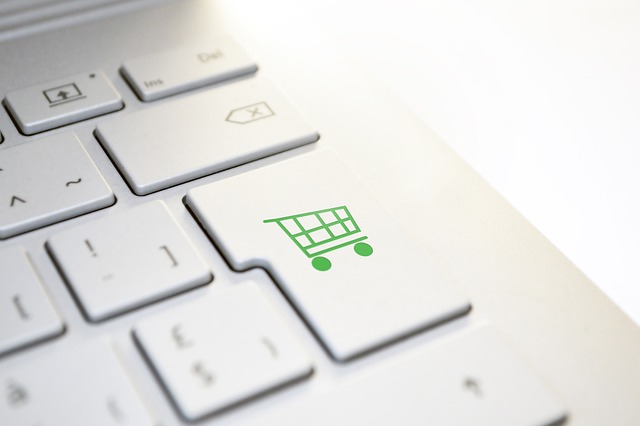- Co to jest mobile commerce?
- Zalety mobile commerce
- Jak zacząć sprzedawać przez mobilne urządzenia?
- Ważne kwestie bezpieczeństwa w mobile commerce
- Trendy w mobile commerce
- Przykładowe strategie marketingowe dla mobile commerce
Co to jest mobile commerce?
Mobile commerce, znany również jako m-commerce, to proces dokonywania transakcji handlowych przy użyciu urządzeń mobilnych, takich jak smartfony i tablety. Dzięki rozwojowi technologii i powszechności dostępu do internetu, zakupy mobilne stają się coraz bardziej popularne i wygodne.
W ramach mobile commerce użytkownicy mogą przeglądać i kupować produkty online, korzystając z dedykowanych aplikacji lub mobilnych wersji stron internetowych sklepów. Dzięki temu mogą robić zakupy z dowolnego miejsca i o dowolnej porze, bez potrzeby korzystania z komputera stacjonarnego. Wraz z rosnącym udziałem smartfonów w naszym codziennym życiu, mobile commerce staje się kluczowym elementem dla wielu firm i przedsiębiorstw, które starają się dotrzeć do swoich klientów w bardziej personalizowany sposób.
Zalety mobile commerce
Mobile commerce, also known as m-commerce, refers to the buying and selling of goods and services through mobile devices, such as smartphones and tablets. This form of e-commerce has numerous advantages and benefits for both businesses and consumers.
One of the main advantages of mobile commerce is convenience. With the increasing popularity and widespread use of mobile devices, people can easily browse and shop for products or services anytime and anywhere. Whether they are waiting in line, commuting to work, or relaxing at home, they can access online stores and make purchases with just a few taps on their screens. This convenience not only saves time but also provides a seamless shopping experience for consumers.
Jak zacząć sprzedawać przez mobilne urządzenia?
W dzisiejszym świecie coraz więcej ludzi korzysta z mobilnych urządzeń, takich jak smartfony czy tablety, do przeglądania internetu i robienia zakupów online. Dlatego warto skorzystać z tej szansy i zacząć sprzedawać przez mobilne urządzenia.
Pierwszym krokiem jest stworzenie responsywnej strony internetowej. Oznacza to, że strona powinna dostosowywać się do różnych rozmiarów ekranów, aby użytkownicy mogli wygodnie przeglądać oferty i dokonywać zakupów zarówno na małym telefonie, jak i na dużym tablecie. Ważne jest, aby strona była intuicyjna i łatwa w obsłudze, a przyciski i formularze były odpowiednio dostosowane do dotykowego ekranu. Można również rozważyć stworzenie dedykowanej aplikacji mobilnej, która jeszcze bardziej ułatwi klientom dokonywanie zakupów.
Ważne kwestie bezpieczeństwa w mobile commerce
Ważne kwestie bezpieczeństwa w mobile commerce stanowią jedną z najważniejszych spraw, które należy wziąć pod uwagę przy korzystaniu z handlu mobilnego. Prowadzenie transakcji za pośrednictwem smartfona lub tabletu stwarza wiele potencjalnych zagrożeń, z którymi należy się uporać, aby zapewnić bezpieczeństwo użytkowników.
Pierwszą istotną kwestią jest zabezpieczenie danych transakcyjnych. Handel mobilny wiąże się z przekazywaniem wrażliwych informacji, takich jak dane karty kredytowej, numer konta bankowego czy dane osobowe. Aby zapewnić bezpieczeństwo tych danych, ważne jest stosowanie odpowiednich protokołów szyfrowania, takich jak SSL (Secure Sockets Layer), które zabezpieczają dane podczas ich przesyłania między urządzeniem mobilnym a serwerem handlowym. Ponadto, niezbędne jest stosowanie sprawdzonych aplikacji i narzędzi antywirusowych w celu minimalizacji ryzyka ataku hakerów czy kradzieży danych.
Trendy w mobile commerce
Mobile commerce, also known as m-commerce, is on the rise and has become an integral part of the retail industry. With the rapid advancements in technology, there are several trends that are shaping the landscape of mobile commerce.
One of the key trends is the increasing use of mobile wallets and digital payment options. Consumers are adopting mobile payment apps such as Apple Pay, Google Wallet, and Samsung Pay for their convenience and security. These mobile wallets allow users to store their payment information and make quick and easy purchases with just a few taps on their smartphones. As more retailers and businesses embrace these technologies, mobile commerce is becoming a seamless and hassle-free experience for consumers.
Przykładowe strategie marketingowe dla mobile commerce
Mobile commerce, also known as m-commerce, is rapidly growing as more and more consumers turn to their smartphones and tablets to make online purchases. To effectively reach and engage with this mobile-savvy audience, businesses need to implement effective marketing strategies specifically tailored for mobile commerce. One such strategy is the use of push notifications. By sending targeted, personalized messages directly to customers’ mobile devices, businesses can effectively communicate promotions, discounts, and other important information to drive sales and increase customer retention. Push notifications can also be used to remind customers of abandoned shopping carts, encourage them to complete their purchase, and even offer exclusive discounts to incentivize conversion. Additionally, businesses can utilize mobile apps and optimize their mobile websites to enhance the user experience and make it easier for customers to navigate, browse products, and make purchases on their mobile devices.
Another effective strategy for mobile commerce marketing is the use of location-based marketing. This involves using customers’ geographic location data to deliver highly targeted and relevant advertisements. Businesses can leverage this strategy by sending location-specific promotions or discounts to customers when they are in close proximity to their physical stores. For example, a clothing retailer can send a push notification to customers in a certain zip code, notifying them about a flash sale happening at the nearest store. The use of location-based marketing not only enhances the relevance of advertisements but also helps businesses drive foot traffic to their physical stores. Furthermore, businesses can leverage social media platforms, such as Facebook and Instagram, to target mobile users based on their location and interests, allowing for highly targeted advertising campaigns.




